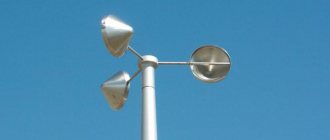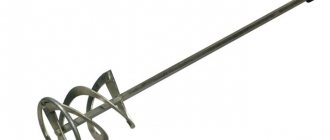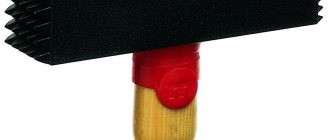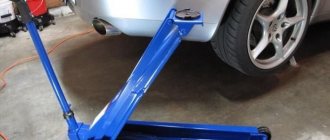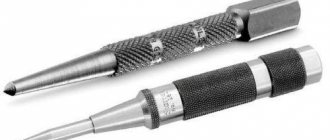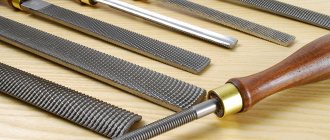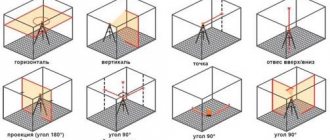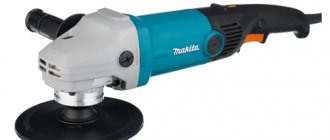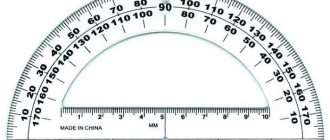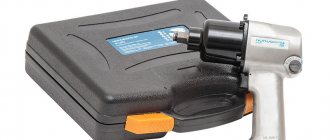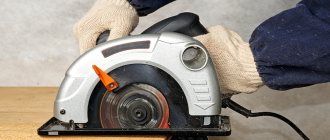An anemometer (or wind gauge) is a device that can show the speed of air flow. In the modern world, there are variations of it, which also reflect the temperature of the moving stream. Most of them are manufactured in factories, but, if desired, the simplest model can be made independently. The scope of their application is quite extensive and in many ways specific.
Anemometer - general information
Today, anemometer devices have gone far from their original purpose - now they can measure not only wind speed, but also the speed of movement of various gases. Thus, its specialization has expanded significantly and the device can be used not only for scientific meteorological purposes, but also have applied purposes, for example, to determine wind speed at airfields and helipads, to determine storm gusts in ports, to determine the possibility of construction work on high-rise buildings, as well as during the movement of harmful gases in the ventilation of mining mines. The units of measurement for these devices are set in meters per second.
If previously the device was an exclusively stationary object, today there are mobile versions that are perfect for transportation and use in hard-to-reach places.
Principle of operation
Measuring the speed of movement of air mass or gases, as well as outputting the obtained data and converting them into the necessary units, is carried out by three structural elements of the device:
- Measuring element - by exciting its sensors, direct measurements are made, which is carried out using ultrasound, metal cooling, pressure drops, radiation intensity;
- Transforming element - the resulting physical quantities are transformed into some energy form;
- The fixing element consists of dials, counters and indicators that clearly display the results obtained.
Vane anemometer
This device is capable of determining air speed, which ranges from 0.5 to 45 m/s. In addition, this device allows you to measure temperature, which ranges from minus 50 to plus 100 degrees.
The design of the anemometer is such that the wind is sensed by a bladed impeller. This is a small, lightweight wheel that is protected from mechanical stress by a metal ring. The principle of its operation resembles a fan or a mill. Under the influence of wind, the impeller begins to rotate. Through a system of gear wheels, its rotation is transmitted to the arrows of the counting mechanism.
The manual anemometer is designed so that the counting mechanism is located next to the impeller. This creates a barrier to the wind, thereby limiting the operating range. Such devices can measure wind speeds that do not exceed 5 m/s. These devices are suitable for measuring air flow in ventilation shafts, pipelines, air ducts and so on.
The digital vane anemometer is designed in such a way that the sensor is built inside the device or is remote. Thanks to this design, there is no barrier to the wind. Therefore, the device measures flow, the speed of which can reach 45 m/s.
Variety of models and their classification
Depending on the operating principle and design features of the wind meter, they can be divided into electronic, mechanical and ultrasonic:
- Mechanical - due to the movement of air masses in their structure, individual parts (blades) rotate. This category includes cup and wing (blade) samples. They differ from each other only in the shape of the incoming air capture element - it is either a blade or a bowl.
- Heating or thermal - they house a heating sensor, usually a regular incandescent wire, which cools down when exposed to moving air masses. Based on the indicators of reducing the heating temperature of the sensor, a measurement is made. Applies to electronic versions.
- Ultrasonic – they carry out measurements based on determining the speed of movement of the acoustic wave. That is, sound, moving through an excited gas cloud (air), will have different speeds. When it moves towards the wind, its speed decreases. In the opposite case, the speed of sound increases. Based on this physical phenomenon, the measurement is carried out.
Existing classification
Among other things, anemometer models can be classified according to the type of sensor responsible for interaction with the air flow. On this basis they are divided into:
- Rotating - when interacting with the wind, certain parts of the structure begin to rotate depending on the strength of the latter;
- Acoustic – capable of measuring sound speed;
- Thermal – operating within the temperature difference of the measuring element;
- Optical - complex devices that require the presence of a special object in the moving flow, from which the laser beam will be reflected, on the basis of which the measurement is made;
- Dynamic - based on the Pitot-Prandtl tube principle, where the speed is measured based on the difference in pressure between the incoming and outgoing flows.
IMPORTANT! The last two operating principles are actually used only in scientific research and have little practical significance, since the high-precision results they obtain in everyday life will not be of much importance.
Classification
The device for measuring wind speed has a sensor in its structure that is in direct contact with the air flow. Depending on the type of this sensor, the following types of anemometers are distinguished:
- Rotating, in which individual structural elements begin to rotate under the influence of wind speed.
- Ultrasonic, which is also called acoustic.
- Heating, they are also called thermal.
- Optical, which in turn are divided into laser and Doppler.
- Dynamic, whose operating principle is based on a Pitot-Prandtl tube.
- Float
- Vortex.
This is a list of devices that can be found currently.
Popular wind gauge options
Winged
This type of device is the most common and is capable of producing results of sufficient accuracy that are suitable for both household and industrial purposes. These models are most widely used in the following industries:
- At meteorological stations (in order to observe changes in weather phenomena);
- At airfields (to determine the possibility of flights);
- In mining ventilation systems (to determine the level of proper air draft output);
- In the construction industry (to measure the force of air flow when working at height, for example, to determine the permissibility of work on tower cranes);
- In the agricultural industry (to determine the possibility of treating crops with protective chemicals and fertilizers from the air).
IMPORTANT! Most vane devices are capable of measuring wind speed in various planes while simultaneously measuring air temperature.
The design of blade models includes three main blocks:
- The module responsible for measuring wind speed in a state of so-called rest. Simply put, the module detects the degree of disturbance of the air mass as it passes through the blades.
- The module responsible for the conversion is the one that serves as the “translator” of the received data into physical units.
- Module responsible for registration - the received data from the converter is visually recorded for ease of reading by the operator.
Cup
These wind meters are designed to carry out measurements only in the plane that is directly perpendicular to the rotational axis of the bowl. Traditionally, the device has four bowls, made in a hemispherical shape, located on a cross-shaped rotor spoke and having symmetrical dimensions. Cup hand devices are capable of counting the number of revolutions of the cross made over a certain period of time. Their improved versions are also equipped with various types of tachometers in order to improve the quality of the results obtained. Measurements are taken instantly in real time, and the measurement accuracy ranges from 0.2 to 30 meters per second.
Thermal
Their operating principle is to measure electrical resistance on a wire sensor. This indicator changes depending on the temperature of its heating, which decreases when the air flow is too fast. Structurally, it is a metal filament made of tungsten, silver, nichrome or platinum (or other metal). This thread is heated by electric current to a temperature that should exceed the current ambient temperature. The main disadvantage of wind meters of this type is their very poor resistance to strong mechanical influences.
Ultrasonic
Their operating principle is based on measuring the speed of sound in a turbulent gas flow, which is carried out on the basis of the laws of physical acoustics. Thus, if sound travels in the same direction as the air mass, then its speed increases, and vice versa, when it is opposite to the direction of air movement, its speed decreases. Based on the difference obtained, the time interval of the ultrasound pulse response is measured.
This device is the most modern and, as a rule, is equipped with electronic controllers for outputting the results obtained. The sensor itself is capable of performing several functions (depending on its type):
- Two-dimensional sensor – provides data on the direction and speed of wind flow;
- Three-dimensional sensor – will be able to determine all three elements of wind speed;
- Four-dimensional sensor - in addition to the above functionality, it can also set the temperature of the air flow.
Ultrasonic models can withstand wind speeds of up to 60 meters per second.
What types of anemometers are there?
Depending on the mechanism of action, devices are classified into the following classes:
- rotating;
- thermal;
- acoustic;
- laser.
The difference between these devices is the technology for measuring air flow speed.
- Representatives of the rotating group are:
- With a cup design - a type of ancient mechanical devices that have not lost their relevance today. They have blades with hemispherical petals that resemble a bowl. This device, due to the fact that, in fact, does not require the installation of blades in the direction of the wind, allows you to measure the speed of flows with minimal inaccuracy. The movement of the masses should be directed into the cavity of the hemispherical petals, but not into the area of the streamlined bottom.
- The operating principle is based on counting the revolutions of the blades. Their number must be adjusted using a coefficient depending on the number and surface area of the blade cups. The value of the coefficient ranges between 2 and 3. In the case of using mechanical models, measurements must be taken over a specific period of time. The electronic one is equipped with a program for determining current gusts from almost several turns.
- Most devices of this type respond to gusty winds with speeds exceeding one meter per second. In addition, a classical model with a similar design cannot determine in which direction the movement of air masses occurs.
- With a vane design - such anemometers are similar in functional principles to the previous type, but have smaller dimensions and are capable of measuring flow parameters at speeds above 0.1 m per second. Their blades rotate under the influence of gusty winds or the movement of gases, this is reminiscent of the propellers of fans or aircraft. The rate of wind movement is determined, as in the previous situation, using the number of revolutions and the instrument coefficient. Thanks to the diffuser, aligned along the movement of air masses, more accurate measurement results can be obtained. Often such an anemometer is equipped with a small weather vane to determine the direction of the wind.
- The thermal group includes the so-called hot-wire anemometers, which contain a thermocouple. The device allows you to record heat loss due to airflow. Everyone knows that under the same temperature conditions, when it is windy outside, the feeling of cold is stronger than when there is no wind. Thermal has a filament through which electricity passes. As a result of strong blowing, the degree of heating of the filament changes, which affects the ability of the metal to conduct current. This is the basis for the operation of instrument electronics when determining air flow speed. Such equipment often acts as an integrated element of other systems. Cars have , which determine the ratio of preparation of the flammable liquid substance used by internal combustion engines. The sensors of these devices are hot-wire anemometers.
- Representatives of the acoustic group have another name - ultrasonic anemometers. The equipment reproduces ultrasonic signals. Then the speed of sound is determined, the magnitude of which is affected by moving air masses. The result is transformed into speed using instrument electronics. A device from this group is often used to determine the speed of gas flows. This anemometer is a complex system that makes calculations taking into account the time required for ultrasonic waves to travel the distance between the transmitted and received device, as well as the influence of external factors. These primarily include air parameters such as temperature and humidity level.
- The laser group is represented by new generation measuring devices that are just gaining popularity. This compact device is often used by fans of extreme sports. It has another name - Doppler (in honor of the author of the invention). The inventor proposed the principle of dependence of the radiation frequency on the speed at which the source and receiver move. This served as the basis for the creation of a complex optical-electronic measuring complex - a laser anemometer. It operates on the principle that involves the movement of an object in a flow of air or gas under the influence of laser radiation, which creates a fixed source. An instrument sensor records the result of the process - the reflection of a light wave from the surface of an object. Next comes the calculation of the difference between the emitted frequencies of light (original and reflected). Taking these indicators into account, wind speed and gas flow movement are calculated.
There is another classification according to which anemometers are divided into 2 types:
- Electronic - devices where electronics perform all the necessary calculation manipulations. They are highly sensitive. These devices (primarily representatives of the rotating group) can be equipped with a remote measuring element, which has the form of a probe. They are convenient for taking measurements, since the result is immediately displayed on the instrument screen. The probe is connected to the device using an elastic wire. Devices can be equipped with their own memory in which measurement results are stored. When displaying data, the date and time it was recorded can be indicated. Availability of additional functionality depends on the model.
- Mechanical - devices where you need to independently keep track of revolutions and calculate indicators using formulas.
This measuring technique records:
- current speed;
- strong bursts of wind gusts;
- average values.
Differences between different types of devices
The most important difference between a mechanical device and an electronic one is that the first one will need to manually record the revolutions produced by the measurement sensors, and then independently make calculations using the appropriate formula. For electronic anemometers there is no need to perform this action, because All calculations are performed by an electronic controller. Moreover, electronic versions have increased sensitivity and can simultaneously record three parameters:
- Current speed of the air mass;
- Its maximum impulses in a given period of time;
- Calculate averages.
Separately, it is worth mentioning anemometers, whose measuring part is designed as a special probe and, relatively speaking, is placed outside the main body. It is much more comfortable for the operator to use such devices, because directly during the measurement, the dynamics of changes in indicators can be monitored. This technology is most often used on rotating models and the measuring module is connected to the main body using a cable. Additional equipment of the anemometer with an electronic controller with its own memory will not be superfluous when permanent storage of results is required, including time, place and obtained measurement indicators.
IMPORTANT! It is worth noting that any anemometer is the subject of measurement, therefore, on the territory of the Russian Federation, compliance with the conditions of their certification and compliance with state standards is required!
Problems of choice
When purchasing a new anemometer, you should always decide under what conditions it will be used and for what purposes. It is best to pay attention to the following points:
- Technical parameters (in what range will it be necessary to measure the speed of movement of air masses - high-speed or will the movement occur at low or medium speeds);
- Accuracy characteristics (for ultra-precise measurements in laboratory conditions, it is preferable to use dynamic or laser models);
- The potential for warranty cases to arise (for example, when speed limits are exceeded);
- Hull design and strength;
- Quality of measuring sensors;
- Additional equipment.
The presence of an additional option will always play in favor of the operator, since there will be no need to purchase additional equipment, for example, humidity sensors, temperature sensors or a tachometer. Separately, you need to pay attention to the units of measurement - for foreign-made samples they may be in a different system, not only different from metric, but measurements can also be made on other physical scales not accepted in the Russian Federation.
Price issue
The current Russian market segment is able to offer cheap models of wind meters, which will cost the user around 1,500 - 2,000 rubles. These are devices with a traditional design, which have a high degree of error coupled with little optional functionality. The most preferable purchase is considered to be devices with a cost of 8,000 - 10,000 rubles. They, as a rule, produce fairly high accuracy results and have protective shells on their bodies, which makes it possible to use them in aggressive environments. Professional devices, costing from 20,000 rubles or more, are in demand in industrial sectors (construction and agriculture), because they have extremely wide functionality, have minimal deviations from actual measurements, and additional devices are standardly supplied with them.
Some tips for use
Before operating the device, you should carefully examine its controls. For most devices, the operating principle itself may be standard, but the designations on its recording modules and the type of final results provided may be different.
It is also worth familiarizing yourself with the operating conditions recommended by the manufacturer - this is necessary in order to eliminate the risks of premature failure of the device. For example, some manufacturers expressly prohibit the use of their product under direct ultraviolet rays. It is always necessary to remember that the wind meter is a precise measuring instrument, and any external influence on it may well affect the accuracy of the results. The same can be said about the presence of excessive amounts of dirt and dust in the measured air masses - this circumstance is especially relevant for mechanical devices. Thus, the mechanical wind meter must be in a state of perfect cleanliness before starting measurements.
At the same time, anemometers should not be subjected to prolonged operating loads. And before starting any research, the wind meter should be verified:
- Inspect it for external damage;
- Check the correctness of the received data under gentle conditions;
- Test the nodes responsible for outputting the results.
Thermal appliances
The operating principle of such anemometers is to determine the electrical resistance of the wire. This value changes depending on the temperature, which is reduced by the moving air flow. It is similar to how on a hot sunny day the breeze cools your skin.
The design of the anemometer is a metal filament (made of platinum, nichrome, silver, tungsten and other metals), which is heated by electric current to a temperature exceeding the ambient temperature.
Instead of an epilogue
A market study has established that the lower segment is completely conquered by Asian-made goods, which, at a low price, have the same low accuracy. It is quite gratifying that the middle price segment is represented by Russian products, which in terms of their performance are not inferior to Western foreign models, while at the same time having a fairly adequate cost. At the same time, the Asian manufacturer has distinguished itself in the premium class among ultra-precise instruments, and its price has been set at the European level. However, for scientific research, models from Western brands with high-quality electronic components and variable thermal sensors are more suitable.
